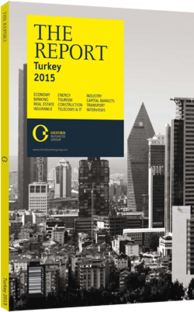Mehmet Bostan, General Manager, Vakıf Emeklilik: Interview

Interview: Mehmet Bostan
Since its implementation in early 2013, how has the government’s matching scheme affected growth of the private pensions industry?
MEHMET BOSTAN: We can confidently say that the government’s matching scheme in early 2013 affected the private pension industry in a very positive way. The private pension system started to make a huge impact on the Turkish economy, especially after 2013. Since the government introduced a 25% contribution to each pension plan at the beginning of 2013, pension fund assets grew 85% in only two years, according to the Pension Monitoring Centre. We expect this growth will continue in 2015. By 2023 we project that the number of contributors will be roughly 12m and that total funds will reach approximately TL400bn (€140.8bn).
What is the importance of the new rules?
BOSTAN: In my opinion, 2013 was a groundbreaking year for the Turkish pension system. Before 2013, when we lacked the government’s 25% contribution, the general public was not aware of the significance of the pension system and its critical effect on the economy. The new pension fund landscape has changed this mentality among people and the media, in particular, and this new understanding has started to transform investment habits in the country. Before 2013 people used to invest in gold, real estate and deposits, but after the new legislation people have started to notice the benefits and viability of the pension system. In my opinion, this is the most important change brought about by the new rules.
In addition to this main benefit, the new regulations have also opened up the industry to the masses. After 2013, with the government’s 25% contribution, everyone now has a motivation to save and people can start saving with a relatively small amount. The new system also introduced new saving options for informal workers such as homemakers, students and senior citizens. Since the new system began, more than 62% of people in the pool of potential contributors, i.e. 5m individuals, have entered the system. From my point of view, this is a significant achievement for the industry. Between 2003 and 2013, 3m people joined the pension system in Turkey. After 2013, with the government’s 25% contribution, there was a sharp increase and 2m new people were added to the total in only two years, and the system has reached over 5m people today. Finally, in my opinion, the last important benefit is reflected in the saving rate. The saving rate has reached its highest point since 2008, at 14.6% in the third quarter of 2014. These improvements are very important for the future well-being of the Turkish economy and people.
What reforms can help the industry grow further?
BOSTAN: In high-income countries, corporations play a significant role in the pension industry by matching their employees’ contributions. In contrast, Turkish corporations provide only around 6.42% of total contributions. The government has started to encourage corporate contributions with some tax advantages and revisions to the vesting process. These incentives are not yet sufficient and this is currently the weakest point in the pension system.
However, the Turkish government has recently proposed a solution to this problem by introducing a trial period for auto-enrolment in 2014. Under this new trial period, employers will be required to enrol their employees in the pension system automatically. People currently do not save adequately in Turkey so auto-enrolment will be an effective incentive to help them save for their retirement. We expect that this auto-enrolment process will be finalised by the end of 2015.
As a leading player in the pension fund industry, we also believe that the current pension fund system in Turkey will be much stronger and larger with the implementation of these new strategies, meaning both the government and corporate contributions. And consequently, an increased savings rate will provide a boost to the Turkish economy in the coming years.
You have reached the limit of premium articles you can view for free.
Choose from the options below to purchase print or digital editions of our Reports. You can also purchase a website subscription giving you unlimited access to all of our Reports online for 12 months.
If you have already purchased this Report or have a website subscription, please login to continue.

